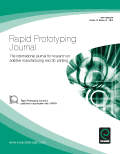
RAPID PROTOTYPING JOURNAL
Scope & Guideline
Pioneering Research in Rapid Prototyping Technologies
Introduction
Aims and Scopes
- Additive Manufacturing Technologies:
The journal covers various additive manufacturing technologies, including material extrusion, powder bed fusion, stereolithography, and binder jetting, exploring their principles, applications, and advancements. - Material Characterization and Development:
Research on new materials suitable for additive manufacturing, including polymers, metals, ceramics, and composites, with a focus on their mechanical properties, microstructures, and processing techniques. - Design for Additive Manufacturing (DfAM):
Studies on design methodologies and frameworks that optimize part performance and manufacturability in additive processes, including topology optimization and bespoke design approaches. - Process Optimization and Control:
Investigation of process parameters influencing the quality and performance of additively manufactured parts, including thermal management, layer adhesion, and defect detection. - Application in Medical and Aerospace Industries:
Research that applies additive manufacturing to critical sectors such as healthcare and aerospace, focusing on custom implants, prosthetics, and lightweight structures. - Sustainability and Recycling:
Exploration of sustainable practices in additive manufacturing, including the use of recycled materials and energy-efficient processes. - Integration with Industry 4.0:
The journal discusses the integration of additive manufacturing with digital technologies, including machine learning, data analytics, and automation for smart manufacturing.
Trending and Emerging
- Machine Learning and AI in AM:
The integration of machine learning and artificial intelligence for process optimization, defect detection, and predictive modeling is gaining momentum, showcasing the potential for smarter manufacturing solutions. - Multi-Material and Hybrid Printing:
Research in multi-material additive manufacturing is on the rise, focusing on the development of hybrid systems that combine different materials for enhanced functionalities and properties. - Bioprinting and Medical Applications:
The application of additive manufacturing in bioprinting and the production of personalized medical devices is increasingly prominent, reflecting a growing interest in healthcare innovations. - Sustainability in AM:
There is a notable trend towards sustainability, with research focusing on recycling methods, eco-friendly materials, and energy-efficient processes in additive manufacturing. - Advanced Material Composites:
The exploration of advanced composite materials, including bio-composites and functionalized materials, is trending, as researchers seek to enhance performance and application range. - Digital Twin and Industry 4.0 Integration:
The application of digital twin technology and IoT in additive manufacturing processes is emerging, emphasizing real-time monitoring, predictive maintenance, and process optimization. - 4D Printing and Smart Materials:
Research on 4D printing, which involves materials that change properties over time, is becoming increasingly relevant, particularly in applications requiring adaptive and responsive designs.
Declining or Waning
- Traditional Manufacturing Comparisons:
Research comparing additive manufacturing processes with traditional manufacturing methods has become less prevalent as the focus shifts towards unique benefits of AM, rather than direct comparisons. - Basic Process Descriptions:
Papers providing basic descriptions of additive manufacturing processes are declining, as the audience seeks more in-depth analyses, optimizations, and applications rather than introductory content. - General Reviews without Novel Insights:
Comprehensive reviews that do not present new data or insights are being published less frequently, as the journal aims for contributions that provide fresh perspectives or advancements in the field. - Limited Focus on Single Material Studies:
There is a noticeable decrease in studies focusing solely on single materials without considering their applications, hybridization, or functional enhancements, as the field moves towards more complex material systems. - Conventional Design Approaches:
Traditional design methodologies that do not leverage the unique capabilities of additive manufacturing are being overshadowed by innovative DfAM strategies that emphasize optimization and customization.
Similar Journals
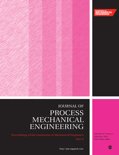
PROCEEDINGS OF THE INSTITUTION OF MECHANICAL ENGINEERS PART E-JOURNAL OF PROCESS MECHANICAL ENGINEERING
Unveiling Insights for Tomorrow’s Mechanical ChallengesPROCEEDINGS OF THE INSTITUTION OF MECHANICAL ENGINEERS PART E - JOURNAL OF PROCESS MECHANICAL ENGINEERING is a leading peer-reviewed journal published by SAGE Publications Ltd, dedicated to the field of mechanical and process engineering. With a strong emphasis on the latest research and developments, this journal covers a wide range of topics that are vital for advancing the understanding and application of mechanical processes in engineering. Holding an impressive Q2 ranking in both Industrial and Manufacturing Engineering and Mechanical Engineering categories for 2023, it promotes high-quality scholarly articles that are instrumental for researchers and professionals alike. The journal's historical range from 1989 to 2024 showcases its commitment to consistently delivering vital insights to the engineering community, making it an essential resource for those seeking to stay at the forefront of the discipline. Although it does not currently offer open access options, the impact factor and relevance of the journal ensure that it remains a valuable platform for disseminating significant findings in the field.
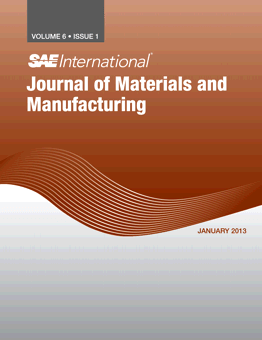
SAE International Journal of Materials and Manufacturing
Fostering Innovation through Rigorous ResearchSAE International Journal of Materials and Manufacturing, published by SAE International, is a leading peer-reviewed journal that focuses on the advancements and research in the fields of materials science and manufacturing engineering. With ISSN 1946-3979 and E-ISSN 1946-3987, this journal is an essential resource for researchers, professionals, and students who are keen on exploring innovative materials and modern manufacturing techniques. Although the journal currently does not offer open access options, its rigorous selection process ensures the publication of high-quality papers that contribute significantly to the knowledge base in the industry. Recognized within the third and fourth quartiles across various engineering categories, including Industrial and Manufacturing Engineering and Mechanical Engineering, the journal provides an impactful platform for disseminating groundbreaking research. With a converged history since 2002 and a comprehensive approach to critical topics in mechanics of materials, it empowers the academic community with vital insights, trends, and methodologies that propel the future of manufacturing excellence.

STROJNISKI VESTNIK-JOURNAL OF MECHANICAL ENGINEERING
Pioneering Research in Mechanical Engineering ExcellenceSTROJNISKI VESTNIK-JOURNAL OF MECHANICAL ENGINEERING is a prestigious publication that has been disseminating cutting-edge research in the field of mechanical engineering since 1974. Published by the Association of Mechanical Engineers Technicians Slovenia, this journal serves as a critical platform for professionals, researchers, and students aiming to explore advancements in mechanical engineering and mechanics of materials. With a category ranking in the Q3 quartile for both Mechanical Engineering and Mechanics of Materials, the journal reflects a robust engagement with contemporary research and practices, contributing to the ongoing discourse within these vital disciplines. Although currently not open access, the journal is committed to providing high-quality, peer-reviewed articles that facilitate knowledge sharing and innovation. It is indexed in Scopus, maintaining respectable standings within its categories, thereby underlining its importance and impact in the global academic community.
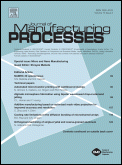
Journal of Manufacturing Processes
Innovating Processes for a Sustainable FutureThe Journal of Manufacturing Processes, published by Elsevier Science Ltd, serves as a premier platform for researchers, professionals, and students engaged in the fields of Industrial and Manufacturing Engineering as well as Management Science and Operations Research. With an impressive Q1 ranking across multiple categories for 2023, this journal not only showcases innovative research but also provides insights into strategic management and operational excellence within the manufacturing sector. Covering an extensive timeline from 1999 to 2024, the journal has solidified its position within the academic community, consistently ranking in the top percentile across various Scopus categories. Although it does not offer open access, the journal maintains a commitment to disseminating high-quality, peer-reviewed research that drives advancements in manufacturing processes. Located in the Netherlands, the journal aims to foster collaboration and knowledge sharing among scholars and industry experts alike, making it an indispensable resource for anyone dedicated to the advancement of manufacturing science.
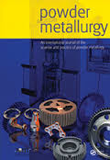
POWDER METALLURGY
Advancing the Frontiers of Powder MetallurgyPOWDER METALLURGY, with ISSN 0032-5899 and E-ISSN 1743-2901, is a prestigious journal published by SAGE Publications Inc, located in the United Kingdom. Founded in 1958, the journal has been a pivotal platform for the dissemination of innovative research and advancements in the fields of ceramics and composites, condensed matter physics, materials chemistry, and the mechanics of materials. With a commendable impact factor and consistently ranked in the second quartile across multiple categories, POWDER METALLURGY is recognized for its rigorous peer-review process and high-quality articles. The journal is an essential resource for researchers, professionals, and students seeking the latest insights and developments in powder metallurgy and allied materials science disciplines. While it does not offer open access options, readers can access a wealth of information that underscores the journal's commitment to serving as a foundational reference in the progressing landscape of materials science and engineering.

Manufacturing Technology
Elevating Standards in Manufacturing TechnologyManufacturing Technology is a respected journal dedicated to advancing the field of industrial and manufacturing engineering. Published by the Jan Evangelista Purkyne University in the Czech Republic, this journal serves as a vital resource for researchers, professionals, and students interested in the latest developments and technologies in manufacturing processes. With an ISSN of 1213-2489 and E-ISSN 2787-9402, it has carved its niche as a Q3-ranked journal in the 2023 category of Industrial and Manufacturing Engineering on Scopus, showcasing its commitment to high-quality research, evidenced by its standing among the top publications in its field. Although not an open-access journal, it fosters significant academic exchange through its collection of research articles and reviews that span a diverse range of topics. The journal's reach is expanded, having existed for over a decade, with converged years from 2011 to 2024. As manufacturing technologies continue to evolve, Manufacturing Technology remains a key platform for disseminating innovative research, ensuring its relevance and impact within the academic community.

MM Science Journal
Driving Knowledge Forward in Engineering Disciplines.MM Science Journal is a leading publication in the fields of Automotive Engineering, Electrical and Electronic Engineering, Industrial and Manufacturing Engineering, and Mechanical Engineering, published by MM SCIENCE. Established in 2014 and spanning a converged period to 2024, this journal serves as a crucial platform for disseminating innovative research and practical applications relevant to industry professionals and academic scholars alike. With a notable Q3 ranking in multiple engineering categories and Scopus Ranks placing it in the 35th to 25th percentiles across various disciplines, MM Science Journal is committed to advancing knowledge and fostering collaboration in engineering disciplines. Although not currently an open-access publication, the journal remains instrumental for those seeking to engage with cutting-edge developments in engineering from its base in the Czech Republic. Researchers, students, and professionals are encouraged to explore the rich findings shared within its pages, contributing to the ongoing evolution of engineering practices.

MANUFACTURING ENGINEERING
Advancing the Future of Manufacturing InnovationManufacturing Engineering is a pivotal journal specializing in the fields of Industrial and Manufacturing Engineering, as well as Mechanical Engineering, with a rich history of publication since its inception in 1975. Published by the esteemed Société des Ingénieurs de Fabrication (SME), this journal plays a crucial role in disseminating innovative research, practical applications, and emerging technologies that shape the manufacturing sector. Despite its recent positioning in the Q4 quartile rankings on Scopus, the journal serves as a platform for rigorous peer-reviewed articles that contribute to the academic dialogue and bolster advancements in manufacturing practices. The journal operates without open access options, making it an essential resource for institutions and professionals looking to stay informed within the manufacturing domain. With a dedicated audience comprising researchers, engineers, and industry professionals, Manufacturing Engineering continues to address the evolving challenges and opportunities in manufacturing, fostering an environment ripe for collaboration and exploration.
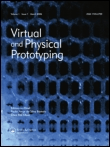
Virtual and Physical Prototyping
Advancing the Future of Prototyping TechnologiesVirtual and Physical Prototyping is a premier scholarly journal published by Taylor & Francis Ltd, which has established itself as a leading platform for innovative research in the fields of Computer Graphics, Computer-Aided Design, Industrial and Manufacturing Engineering, Modeling and Simulation, and Signal Processing. Since its inception in 2006, the journal has gained significant recognition, currently ranked in the Q1 quartile in multiple categories, reflecting its high impact and rigorous standards of scholarship. Now an Open Access journal as of 2023, it provides a unique opportunity for researchers, professionals, and students to share their work widely and engage with a global audience. With its strategic emphasis on the convergence of virtual and physical prototyping technologies, this journal contributes vital knowledge and insights that drive innovation and development in manufacturing processes and design methodologies. Located in the United Kingdom, its comprehensive approach to both theoretical and practical aspects of prototyping ensures that it remains an essential resource for advancing the respective fields it represents.

Advances in Manufacturing
Elevating Standards in Industrial and Mechanical EngineeringAdvances in Manufacturing, published by Springer, is a premier journal dedicated to the evolving fields of Industrial and Manufacturing Engineering, Mechanical Engineering, Mechanics of Materials, and Polymers and Plastics. With an impact factor placing it in the Q1 category across multiple disciplines for the year 2023, this journal serves as a vital platform for disseminating cutting-edge research and insights that drive innovation in manufacturing practices. The journal is renowned for its rigorous peer-review process, ensuring that only high-quality studies contribute to the body of knowledge. Spanning the years from 2013 to 2024, it not only publishes papers that advance theoretical frameworks but also those that explore practical applications and case studies in the manufacturing sector. Researchers, industry professionals, and students will find invaluable resources within its pages, fostering collaboration and knowledge exchange within the manufacturing community. This journal is based in the United States, located at One New York Plaza, Suite 4600, New York, NY 10004, and is accessible through various institutional subscriptions.